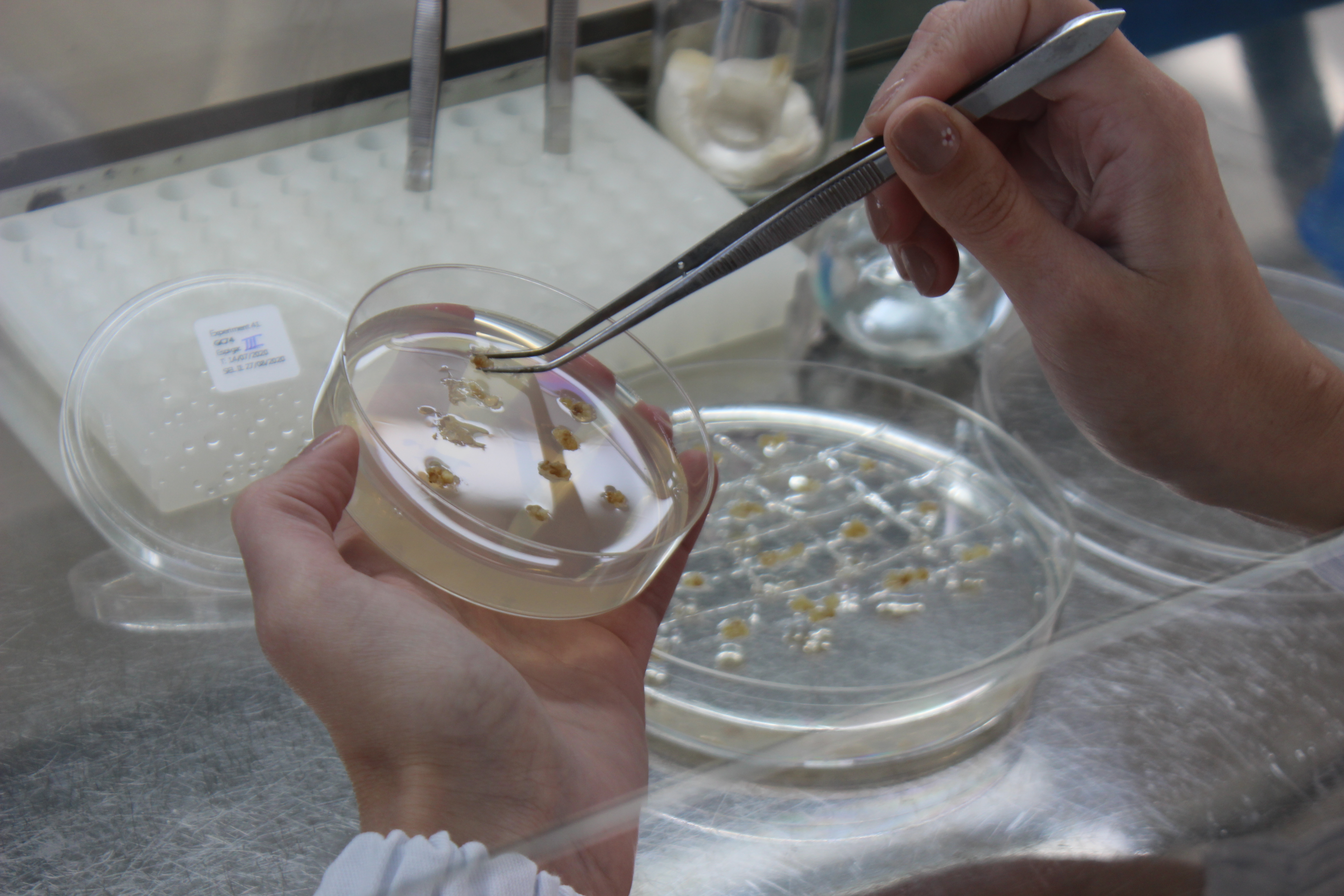

Genome editing in agriculture is seen as a powerful tool to combat climate change (photo: Daniel Pompeu/GCCRC)
Three of the five tropical strains were successfully transformed using the morphogenic gene expression strategy, achieving efficiency rates three times higher than the average of the protocols.
Three of the five tropical strains were successfully transformed using the morphogenic gene expression strategy, achieving efficiency rates three times higher than the average of the protocols.

Genome editing in agriculture is seen as a powerful tool to combat climate change (photo: Daniel Pompeu/GCCRC)
Agência FAPESP* - Researchers at the Center for Research on Genomics Applied to Climate Change (GCCRC), an Engineering Research Center (ERC) created by FAPESP and the Brazilian Agricultural Research Corporation (EMBRAPA), have developed a protocol to accelerate the genome editing of maize plants for the tropical region.
An article published in the journal Frontiers in Genome Editing showed the results of applying a genetic transformation protocol based on the use of “morphogenic regulators” to tropical maize strains, which proved to be three times more efficient than the model protocol based on a temperate strain.
The study was conducting using proprietary and public plants, which facilitates access to new research. Genome editing in agriculture is seen as a powerful tool to combat climate change, for example by developing agricultural varieties that are more drought-tolerant and disease-resistant or more nutritious.
In 2023, Brazil became the largest exporter, overtaking the United States. The tropical region accounts for 30% of global cereal production. However, maize productivity in tropical regions is significantly lower than in temperate areas. According to the authors of the article, this disparity is due to challenges such as low soil fertility, pest infestations, and rain-dependent cultivation, exacerbated by a history of recent genetic improvement compared to temperate maize varieties.
The maize strains used as a study model are mostly from temperate regions, and their performance in field tests in Brazil has not been satisfactory. “These plants are not adapted to the tropical climate, so they don’t perform as well in these regions,” explains José Hernandes Lopes Filho, author of the study developed during his postdoctoral internship at the GCCRC.
Another barrier to maize editing processes is the low efficiency of traditional protocols for genetic transformation, a method in which external DNA – in this case containing genes that promote genome editing – is introduced into cells to allow the expression or modification of specific genes.
In their research, the authors explored a new molecular biology strategy that is showing great promise in maize transformation: the use of genes that stimulate the regeneration process of transformed plants – the so-called morphogenic regulator genes. “The protocol we used, developed by our collaborator Laurens Pauwels in Belgium, was prepared for a temperate strain and worked very well for more than half of the tropical strains we tested,” says Ricardo Dante, author of the study and researcher at Embrapa Digital Agriculture (one of EMBRAPA’s decentralized units) and principal researcher at the GCCRC.
Three of the five tropical strains were successfully transformed using the morphogenic gene expression strategy, achieving efficiency rates three times higher than the average for protocols not using this strategy, reaching 6.63%.
“We now have a study strain that is better adapted to local field conditions,” says Hernandes. This means strains with high transformation susceptibility, the ability to produce healthy seedlings, and agronomic suitability for studies under real production conditions in the country.
The research, supported by FAPESP (22/04929-3, 20/10677-1 and 22/04930-1), is the result of a partnership between the GCCRC and VIB Vlaams Instituut voor Biotechnologie (VIB), from Belgium, and visiting researcher Sofya Gerasimova, from the Institute of Cytology and Genetics of the Russian Academy of Sciences and Novosibirsk State University (Russia), also supported by FAPESP.
* With information from the GCCRC Communications Office
Republish
The Agency FAPESP licenses news via Creative Commons (CC-BY-NC-ND) so that they can be republished free of charge and in a simple way by other digital or printed vehicles. Agência FAPESP must be credited as the source of the content being republished and the name of the reporter (if any) must be attributed. Using the HMTL button below allows compliance with these rules, detailed in Digital Republishing Policy FAPESP.




